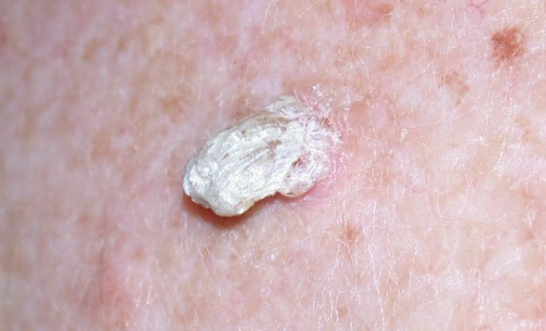Cutaneous horn is a benign solitary skin growth characterized by massive hyperkeratosis. ICD-10 code: L85.8
It can occur at any age, but typically occurs after the age of 50 in both men and women. The pathogenesis is not well understood. There are primary (true) cutaneous horns arising from an area of localized hyperkeratosis and horns associated with various underlying benign and malignant skin conditions. The localization primarily on sun-exposed areas suggests the involvement of sunlight, and in some cases constant trauma (friction, pressure) may play a role.
Associated benign conditions (50-75%):
- Seborrheic keratosis
- Hypertrophic lichen planus
- Discoid lupus erythematosus
- Pyogenic granuloma
- Angiokeratoma
- Eccrine poroma
- Epidermal nevus
- Inverted follicular keratosis
- Molluscum contagiosum
- Dermatofibroma
- Skin myxoma
Associated malignant tumors (8-40%) and precancerous lesions (14-25%):
- Actinic keratosis
- Basal cell carcinoma
- Squamous cell carcinoma
- Bowen disease
- Paget's disease
- Kaposi sarcoma
- Xeroderma pigmentosum
- Melanoma
- Sebaceous carcinoma
Common sites include the face, scalp, auricles, eyelids, and very rarely in areas not exposed to sunlight, such as the trunk, lower limbs, genitals, and mucous membranes.
Primary cutaneous horns grow very slowly in length and the diameter of the base remains almost unchanged. Signs of possible malignancy may include large size, a broad base with tenderness to palpation, and the age of the patient.
- Common warts
- Seborrheic keratosis
- Verrucous form of keratoacanthoma
- Actinic keratosis
- Squamous cell carcinoma.
Treatment: Surgical excision or deep electrodissection with mandatory histologic control.
The prognosis is relatively favorable.

